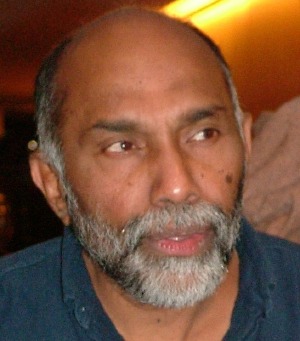Aug 19 2008
A Queen's University Belfast scientist, whose research is now used worldwide in blood analysing equipment, has made another important discovery.
 Professor AP De Silva from Queen's University Belfast, winner of the RSC's Sensors Award for 2008
Professor AP De Silva from Queen's University Belfast, winner of the RSC's Sensors Award for 2008
Recently announced as the winner of the Royal Society of Chemistry’s (RSC) Sensors Award for 2008, Professor A. Prasanna de Silva, has created ‘intelligent’ molecules.
The discovery is based on previous pioneering research by Professor De Silva and his colleagues at Queen’s, which created ‘catch and tell’ sensor molecules that send out light signals when they catch chemicals in blood.
That technology helped create blood diagnostic cassettes which have achieved sales of over $50 million worldwide. Used in hospitals, ambulances, veterinary offices the cassettes are used to quickly monitor blood for levels of common salt components such as sodium, potassium and calcium.
Now, an extension of the same design has developed molecules which can act as simple ‘logic gates’: more complex versions of which are what drive current computers.
Some of the new molecules made at Queen’s can add small numbers, while others developed by US colleagues can play games likes tic-tac-toe and win against human opponents. New research at Queen’s also shows they can also be used as ‘ID tags’ for very small objects the size of biological cells.
Explaining about how the new discovery could be used, Professor De Silva, who is a Chair of Organic Chemistry at Queen’s, said: “So far, our fluorescent sensor technology has been used in blood diagnostic cassettes worldwide. If, for example, you have an accident and need blood, an ambulance crew can analyse your blood at the scene and tell the A&E Unit to arrange for a certain type of blood with the necessary salt levels ready at the hospital for your arrival.”
“Now, we have extended our sensor designs and discovered other possible uses. One such use could be as an ID tag for cells in an epidemic, such as a bird-flu outbreak. From a population, our sensor molecules could help track infection and highlight vulnerable people.
“Also, as logic gates are what drive current computers, molecular versions of these gates open very interesting possibilities. The ID tags example is the first of these applications of molecular logic gates which tackle problems that current computing devices cannot. Another one is a ‘lab-on-a-molecule’ system which combines several lab tests with a rudimentary diagnosis without human intervention.
“It is exciting to think that these tiny molecules can perform small-scale computational operations in spaces where semiconductors cannot go in spite of all their power.”
The 2008 RSC Sensors Award is sponsored by GE Healthcare (a unit of General Electric Company). Professor De Silva’s award consists of a silver medal and a prize of £500. It is given biannually for chemical input into the design of novel sensors or novel applications of existing sensors.
Further information on the area of Organic Chemistry at Queen’s can be found at http://www.ch.qub.ac.uk/index.html